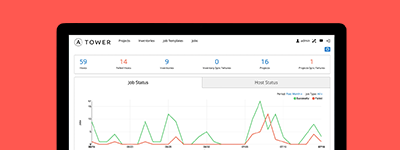ec2_vpc_route_table - Manage route tables for AWS virtual private clouds
New in version 2.0.
Synopsis
Manage route tables for AWS virtual private clouds
Requirements (on host that executes module)
- python >= 2.6
- boto
Options
| parameter | required | default | choices | comments |
|---|---|---|---|---|
| aws_access_key |
no | AWS access key. If not set then the value of the AWS_ACCESS_KEY_ID, AWS_ACCESS_KEY or EC2_ACCESS_KEY environment variable is used. aliases: ec2_access_key, access_key | ||
| aws_secret_key |
no | AWS secret key. If not set then the value of the AWS_SECRET_ACCESS_KEY, AWS_SECRET_KEY, or EC2_SECRET_KEY environment variable is used. aliases: ec2_secret_key, secret_key | ||
| ec2_url |
no | Url to use to connect to EC2 or your Eucalyptus cloud (by default the module will use EC2 endpoints). Ignored for modules where region is required. Must be specified for all other modules if region is not used. If not set then the value of the EC2_URL environment variable, if any, is used. | ||
| lookup |
no | tag |
|
Look up route table by either tags or by route table ID. Non-unique tag lookup will fail. If no tags are specifed then no lookup for an existing route table is performed and a new route table will be created. To change tags of a route table, you must look up by id. |
| profile (added in 1.6) |
no | uses a boto profile. Only works with boto >= 2.24.0 | ||
| propagating_vgw_ids |
no | None | Enable route propagation from virtual gateways specified by ID. | |
| region |
no | The AWS region to use. If not specified then the value of the AWS_REGION or EC2_REGION environment variable, if any, is used. See http://docs.aws.amazon.com/general/latest/gr/rande.html#ec2_region aliases: aws_region, ec2_region | ||
| route_table_id |
no | The ID of the route table to update or delete. | ||
| routes |
yes | List of routes in the route table. Routes are specified as dicts containing the keys 'dest' and one of 'gateway_id', 'instance_id', 'interface_id', or 'vpc_peering_connection_id'. If 'gateway_id' is specified, you can refer to the VPC's IGW by using the value 'igw'. | ||
| security_token (added in 1.6) |
no | AWS STS security token. If not set then the value of the AWS_SECURITY_TOKEN or EC2_SECURITY_TOKEN environment variable is used. aliases: access_token | ||
| state |
no | present |
|
Create or destroy the VPC route table |
| subnets |
yes | An array of subnets to add to this route table. Subnets may be specified by either subnet ID, Name tag, or by a CIDR such as '10.0.0.0/24'. | ||
| tags |
no | A dictionary of resource tags of the form: { tag1: value1, tag2: value2 }. Tags are used to uniquely identify route tables within a VPC when the route_table_id is not supplied. aliases: resource_tags | ||
| validate_certs (added in 1.5) |
no | yes |
|
When set to "no", SSL certificates will not be validated for boto versions >= 2.6.0. |
| vpc_id |
yes | VPC ID of the VPC in which to create the route table. |
Examples
# Note: These examples do not set authentication details, see the AWS Guide for details. # Basic creation example: - name: Set up public subnet route table ec2_vpc_route_table: vpc_id: vpc-1245678 region: us-west-1 tags: Name: Public subnets: - "{{ jumpbox_subnet.subnet.id }}" - "{{ frontend_subnet.subnet.id }}" - "{{ vpn_subnet.subnet_id }}" routes: - dest: 0.0.0.0/0 gateway_id: "{{ igw.gateway_id }}" register: public_route_table - name: Set up NAT-protected route table ec2_vpc_route_table: vpc_id: vpc-1245678 region: us-west-1 tags: Name: Internal subnets: - "{{ application_subnet.subnet.id }}" - 'Database Subnet' - '10.0.0.0/8' routes: - dest: 0.0.0.0/0 instance_id: "{{ nat.instance_id }}" register: nat_route_table
Notes
Note
If parameters are not set within the module, the following environment variables can be used in decreasing order of precedence AWS_URL or EC2_URL, AWS_ACCESS_KEY_ID or AWS_ACCESS_KEY or EC2_ACCESS_KEY, AWS_SECRET_ACCESS_KEY or AWS_SECRET_KEY or EC2_SECRET_KEY, AWS_SECURITY_TOKEN or EC2_SECURITY_TOKEN, AWS_REGION or EC2_REGION
Note
Ansible uses the boto configuration file (typically ~/.boto) if no credentials are provided. See http://boto.readthedocs.org/en/latest/boto_config_tut.html
Note
AWS_REGION or EC2_REGION can be typically be used to specify the AWS region, when required, but this can also be configured in the boto config file
This is an Extras Module
For more information on what this means please read Extras Modules
For help in developing on modules, should you be so inclined, please read Community Information & Contributing, Helping Testing PRs and Developing Modules.


